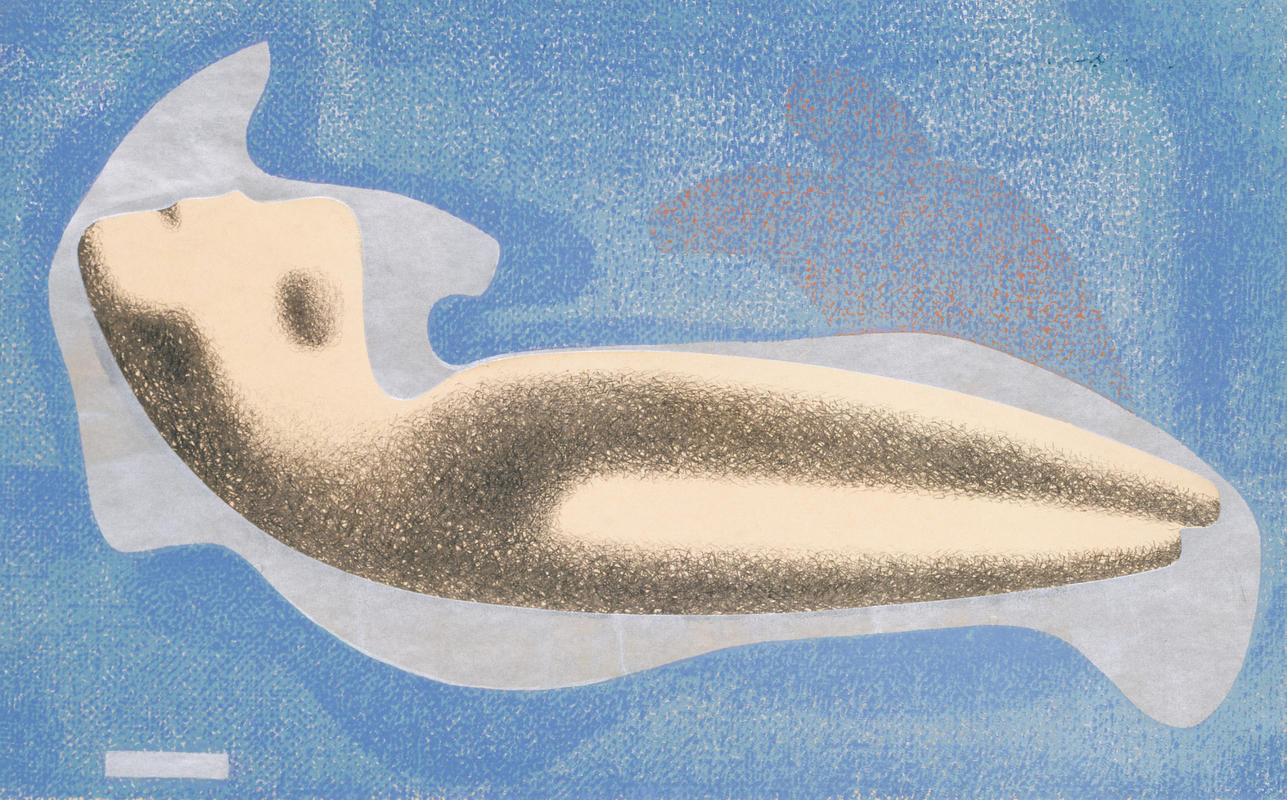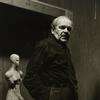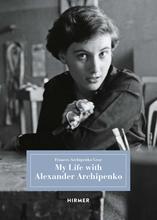More about Torso in Space
- All
- Info
- Shop

Contributor
Combining lithography with screen printing and color embossing, this edition of Torso in Space is an example of Archipenko's "signature melding of two media," based on the "creative and intellectual ferment surrounding cubism."
Three years after this edition of Torso in Space, at the Archipenko Summer Art School, the artist would meet the nineteen-year-old art student Frances Gray, who would become his wife for the last four years of his life. During this time, she writes in her memoir, Archipenko was, to her, an "all-powerful, magical being," although she also admits that her love for his work was more profound and intense than anyone else's, titling one of her chapters "My One-Person Cult." This is very sweet, but also a little sad given that a huge portion of Archipenko's work, and his critical reputation, stayed behind in Europe, destroyed by the Germans as "degenerate" in the period just after he migrated to the States.
Getting ready for dinner with Gray's parents, who the couple hadn't seen since the wedding a year earlier, Archipenko looked in the mirror and asked his young wife, "What are you doing with this old dog?" But Gray was head over heels in love with her man, who could make work in the spirit of Pablo Picasso, but had a distinctive gentleness his Spanish counterpart perhaps did not. "Now he was mine," Gray writes. "We forgot about wrinkles; they weren't mine and we both disowned his." Now there is an anti-aging strategy we can get behind.
On April 21st, 2020, Amy Fox of theSmithsonian American Art Museum featured Archipenko's late-career lithograph Torso in Space in a blog entry entitled "Animals in Art and At Home." Archipenko's work is juxtaposed with a photograph by Adam and Lola Rice, of a tabby kitten, paws outstretched, lying on what appears to be a white paisley bedspread. The cat's no-nonsense expression indicates a full awareness that she is re-enacting an Archipenko work, and she has an opinion about his composition. Fox explains that she is working, due to Coronavirus conditions, from her living room, which has a new double life as her office. "My beloved—and very vocal—dog, Penelope, is not happy about this arrangement." As a way of connecting with others, and showcasing the quarantined SAAM collection, the Museum encourages people to place their animals in poses mimicking artworks in its possession. Pet owners, or "parents," consider this practice to be a high form of honor, a way of offering something even better than criticism. As Archipenko said, ten years after he released this edition of Torso in Space, "History proves that works of art with a truly spiritual content remain immune to criticism." Aside from the cat's, of course.
Sources
- "Олександр Архипенко." Интернет-проект, https://www.interesniy.kiev.ua/oleksandr-arhipenko/.
- Fox, Amy. "Animals in Art and at Home." Smithsonian Magazine, Apr. 21, 2020, https://www.smithsonianmag.com/blogs/smithsonian-american-art-museum/20….
- "Life and Work." Archipenko.org, http://www.archipenko.org/life-and-work.html#1950.
- Michaelsen, Katherine Jánszky. "Frances Archipenko Gray. My Life with Alexander Archipenko." East/West: Journal of Ukrainian Studies II, no. 2 (2015): 141-43.
- "Sale 12005." Christie's, Mar. 1, 2016, https://www.christies.com/lotfinder/Lot/alexander-archipenko-1887-1964-….
- Vrazilek, Jessica. "A conversation with Frances Archipenko Gray." The Jerusalem Post, Feb. 20, 2016, https://www.jpost.com/israel-news/culture/a-conversation-with-frances-a….
- Zabriskie, Virginia. Zabriskie: Fifty Years. New York: Ruder Finn Press, 2004.












